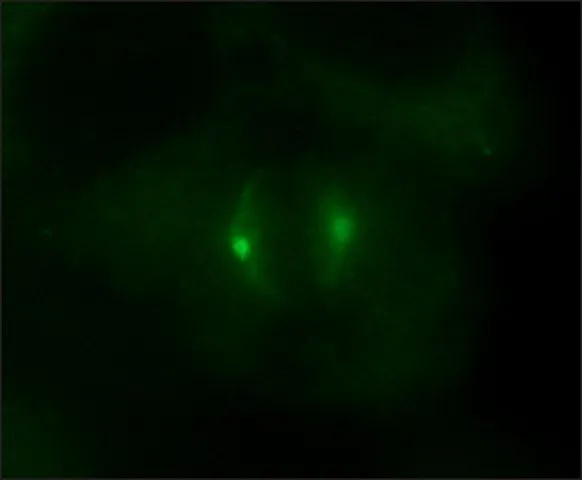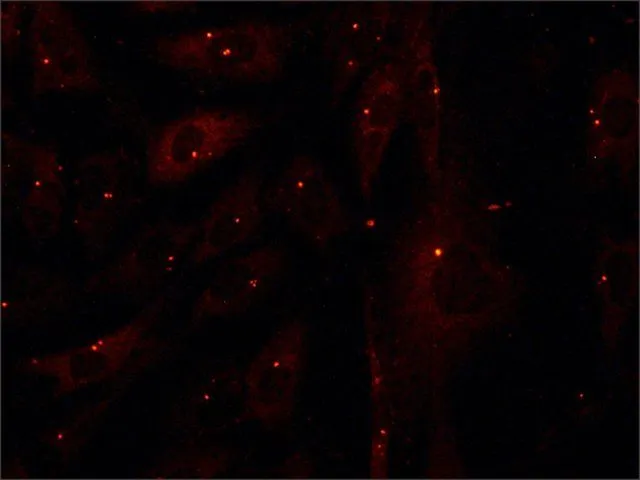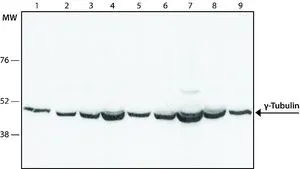
ICC/IF analysis of HeLa cells using GTX11321 gamma Tubulin antibody at 1:1,000. Cells were fixed and permeabilized with methanol followed by acetone.
gamma Tubulin antibody
GTX11321
ApplicationsImmunoFluorescence, Western Blot, ImmunoCytoChemistry
Product group Antibodies
ReactivityAmphibian, Canine, Human, Mouse, Rat
Targettubg1.L
Overview
- SupplierGeneTex
- Product Namegamma Tubulin antibody
- Delivery Days Customer9
- Application Supplier NoteWB: 1:5,000. ICC/IF: 1:1,000. *Optimal dilutions/concentrations should be determined by the researcher.Not tested in other applications.
- ApplicationsImmunoFluorescence, Western Blot, ImmunoCytoChemistry
- CertificationResearch Use Only
- ClonalityPolyclonal
- ConjugateUnconjugated
- Gene ID399272
- Target nametubg1.L
- Target descriptiontubulin gamma 1 L homeolog
- Target synonymsgamma-1-tubulin; gamma-tubulin; tubg1; Tubg2; tubulin gamma-1 chain; tubulin, gamma 1; XELAEV_18002398mg; xgam
- HostRabbit
- IsotypeIgG
- Scientific DescriptionThe protein that binds microtubule minus ends and is responsible for mediating the link between microtubules and the centrosome is called gamma tubulin. Gamma Tubulin functions as the microtubule nucleator at the microtubule organizing centre (MTOC). By binding to the beta tubulin half of the tubulin molecule, it establishes the polarity of a microtubule, leaving the alpha tubulin half exposed at the positive end. Gamma Tubulin (approx. 48 kD) is a ubiquitous and highly conserved protein within the MTOCs in eukaryotic kingdom. It is related to alpha and beta tubulin and is, thus, a member of the tubulin superfamily of proteins. However, its abundance is less than 1% of the level of either alpha or beta tubulin. Moreover, unlike alpha and beta tubulin, it is not a component of microtubules. Rather, it is located at the MTOC. gamma Tubulin shares approximately 28-32% identity with alpha tubulin from various organisms and 32-36% identity with beta tubulins. The detection, localization and characterization of proteins involved in microtubule function is fundamental to the understanding of mitosis, meiosis and the microtubule cytoskeleton. Antibodies reacting specifically with gamma tubulin serve as an essential tool in the detection of the presence and role of this molecule in various cellular settings.
- ReactivityAmphibian, Canine, Human, Mouse, Rat
- Storage Instruction-20°C or -80°C,2°C to 8°C
- UNSPSC12352203
References
- The Bardet-Biedl syndrome protein complex regulates cell migration and tissue repair through a Cullin-3/RhoA pathway. Guo DF et al., 2019 Sep 1, Am J Physiol Cell PhysiolRead more


